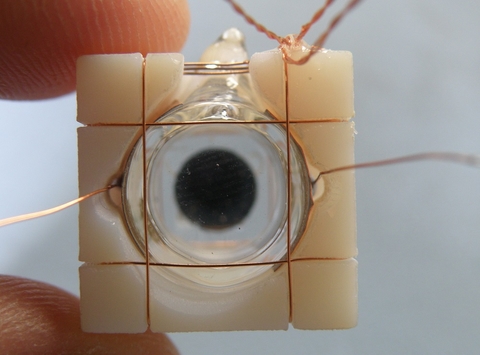Although we get distracted with the leaps and bounds of IoT, virtual reality, robotics, autonomous vehicle, and other mainstream technologies, advancements in the medical sector also abound. One of the reasons these advancements often take a backseat is because they do not always relate to a universal audience. For example, a system for easing dialysis applications may not be of interest to someone who or does not know someone who is suffering from a condition this system would benefit. Also, most non-medical or non-healthcare professionals would not be very partial to reading about said system. Hopefully, that won’t be the case here as Leti has something quite impressive to offer in the medical space.
Giant Steps
Leti, a research institute of CEA Tech, takes a major step forward with the development of a next-generation magnetoencephalography (MEG) that could significantly reduce the cost of MEG systems and scans, improve diagnosis and treatment for epilepsy patients, and help guide surgeons performing brain surgery. That’s an impressive array of bases to round.
In practice, MEG is an imaging technique that measures brain functioning based on magnetic fields produced by the brain’s electrical activity. It enables localization of electrical signals, coming from neural activity, with an increased spatial resolution. It is typically used to localize epileptiform brain activity, originating from the epileptic brain network, prior to surgical intervention.
Leti instructs us that current MEG systems are cryogenically cooled. The cryogenic process requires periodic refilling of liquids, which is time consuming, costly, and provides an avenue for possible errors. Leti’s device requires no maintenance and operates at room temperature, eliminating the need for cryogenic cooling and reducing the size and weight of the magnetic shield from 5,000 kg to 150 kg.
It’s About Space
For this approach, Leti refined its space quantum sensor to achieve performance reportedly higher than current MEG systems at a cost five times lower. The space sensors can also provide more information on brain activity due to their vectoral nature, improving localization of epileptic foci.

The quantum sensor is an optical pumping magnetometer with improved sensitivity due to the use of a low-noise laser source and the selection of magnetic resonance optimized for measurement of very low magnetic fields. The laser can sense the movement of 100 billion atoms acting like small magnets whose behavior is directly linked to the magnetic field.
Consensus
Regis Hamelin, BLUMORPHO CTO, and Matthieu le Prado, group leader at Leti concur, “To develop this disruptive system, Leti’s team developed sensors that can lower the cost of MEG scans by at least a factor of five. This new generation of MEG equipment will deliver dramatically improved visualization of brain activity to support neuro-medicine’s evolution to non-invasive surgery and regenerative medicine.”
Initially, the MEG system will be a flexible helmet that conforms to the heads of adults and children. In addition to improving diagnosis, it will increase patients’ access to neurosurgery, beginning with those with epilepsy, a condition that affects six million people in Europe.
The system won the Best Early Stage Innovation Award from the European Commission in the gateone-project, one of the EC’s Horizon 2020 programs to support development of smart technologies by European SMEs.
Leti, USA
San Francisco, CA